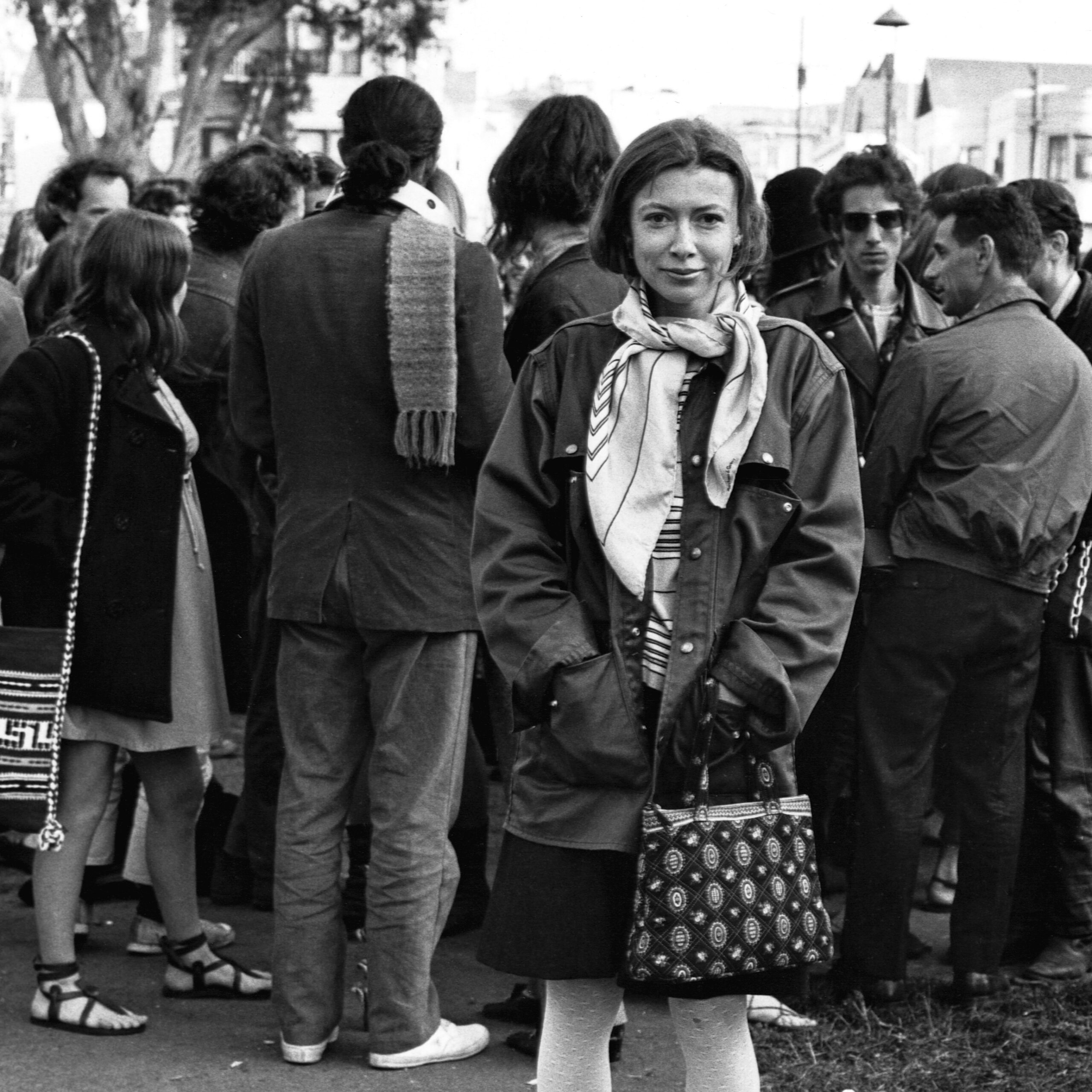Joan Didion was an outsider who intuited that her flintiness and her drive to succeed were tethered to remaining always on the outside looking in. The late novelist and journalistic pioneer died today, Dec. 23, at the age of 87.
Though Didion broke the mold in many ways, she was, if nothing else, a Californian. As such, many Californians—especially those who make a living by writing—are taking to Twitter to issue their remembrances.
Her writing about 1960s San Francisco remains essential… 'The Year of Magical Thinking' helped me through deep grief… Joan Didion gave us all so much of herself and I will love her forever for that. But, even after 87 years well lived, I am so, so sad she's gone. https://t.co/EM63t0i8Kg
— Rae Alexandra (@Raemondjjjj) December 23, 2021
Born in Sacramento in 1934, Didion was perhaps the most famous native of California’s capital city until Greta Gerwig, whose 2017 directorial debut, Lady Bird, was strongly influenced by Didion’s life and work. Like the famous essayist, the title character is a survivor who got out. In Didion’s case, “out” meant a lifetime chronicling the absurdities and contradictions of a complacent social order as it rapidly broke down, particularly in the Golden State’s more cosmopolitan cities.
Today Sacramento is home to high rise towers, a professional sports team and an international airport. But back in the 1930s, the town of fewer than 100,000 probably seemed to Didion’s peers the way Tracy or Modesto seems now: hot, flat, relatively nearby yet light-years distant. It gave her a necessary sense of remove.
She was born & raised in Sacramento. One of the great writers. RIP Joan Didion
— Marcos Breton (@MarcosBreton) December 23, 2021
Joan Didion, legendary New Journalism writer and Sacramento’s native author, dies at 87 https://t.co/bk3bCtfQjj pic.twitter.com/HWcOr2UwrX
She went on to write some of the best examples of what later became known as New Journalism: unsparing and at times harsh magazine profiles of people and topics formerly considered unworthy or even taboo—and she didn’t shy from inserting herself in these accounts.
What brought Didion to the forefront of American literary consciousness was “Slouching Towards Bethlehem.” That 1968 essay, whose title comes from William Butler Yeats’ poem “The Second Coming,” went on to become the backbone of a groundbreaking collection of the same name. Didion’s account of Haight-Ashbury in its heyday analyzes that scene as America’s unravelling in microcosm, complete with teen runaways and Hare Krishnas and a five-year-old girl named Susan who was tripping on LSD and told Didion she went to “High Kindergarten.”
Partly as a result of this story, Didion got a column in Life, in which she icily announced herself as “a woman who for some time now has felt radically separated from most of the ideas that seem to interest other people.” Straddling the line between fiction (Play It As It Lays, A Book of Common Prayer) and nonfiction (The White Album, Miami) Didion was a steely and precise rule-breaker, an elliptical, Corvette-driving Republican often photographed smoking but seldom smiling.
First in Berkeley and later to New York and Los Angeles, Didion wrote about the Mojave Desert and vapid Hollywood cocktail parties and emotionless abortions and The Doors. She hung out with flower children during the Summer of Love—and she was already in her mid-30s by then—and she filled Life, The Saturday Evening Post and The New York Review of Books with what we now call long reads. In her books, she freely used a homophobic term that rhymes with “maggot.” She liked the c-word, too.
Crushed by the deaths of her husband, fellow writer John Dunne, and their daughter, Quintana Roo, Didion’s mourning produced her late-career masterpiece, 2005’s The Year of Magical Thinking. Essentially a work of reportage on her own grief, it won the National Book Award and a Pulitzer.
In her 80s, Didion became the face of ultra-luxe fashion brand Céline, sporting dark sunglasses that made her look unapproachably cool, almost alien—just as she had decades before when lacerating the unexamined pomposities of the counterculture. Didion’s career was always tied to high fashion, in fact: She got her start in 1956 by winning an essay contest sponsored by Vogue, writing about the architect William Wurster, who redesigned Ghirardelli Square.
“‘Hardness’ has not been in our century a quality much admired in women,” Didion wrote in “Georgia O’Keeffe,” a 1976 rumination on the painter collected in The White Album. But hardness is necessary if a writer is going to write about something collapsing. Four decades later, the Netflix documentary Joan Didion: The Center Will Not Hold again referenced the violent breakdown of Yeats’ “The Second Coming.” Didion watched the center of postwar American life first buckle, then topple, then atomize completely. She lived to be 87, hard to the end.
